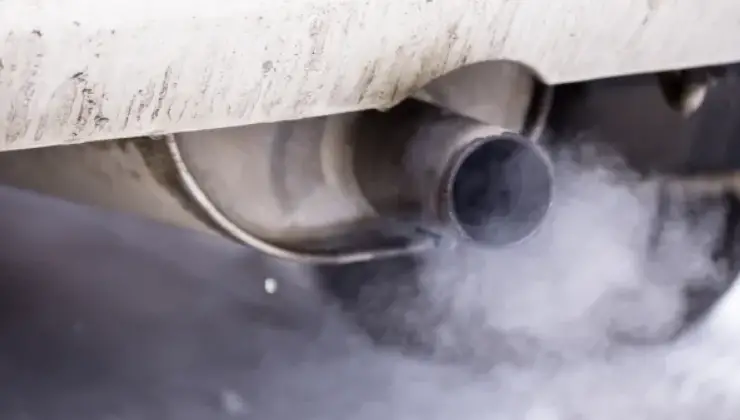If you’ve recently removed the catalytic converter from your car, you may have noticed that it’s smoking more than usual. This can be concerning, as it’s a sign that something may be wrong with the vehicle. In this article, we’ll explore the reasons why your car smoke after removing the catalytic converter and how you can fix it.
Contents
Why does car smoke after removing catalytic converter
The catalytic converter is an essential component in car’s exhaust system that helps reduce emissions. By removing it, you’re essentially removing a part of your car’s emission control system, which can result in an increase in emissions and a decrease in fuel efficiency.
Common causes of smoke after removing catalytic converter
There are several reasons why car may be smoking after removing the catalytic converter, including:
Burning Off Residue: When you remove the catalytic converter, it can cause residue to build up in the exhaust system. This residue can burn off, causing smoke to come out of the tailpipe.
Oil Leaks: Another common cause of smoke after removing the catalytic converter is oil leaks. Without the catalytic converter to trap the oil, it can leak into the exhaust system and burn, resulting in smoke.
Damaged Exhaust System: If the exhaust system is damaged or has holes, it can cause smoke to come out of the tailpipe. This is because the exhaust gases are not being properly filtered and expelled.
Increased Engine Backpressure: When the catalytic converter is removed, the engine’s backpressure decreases, allowing more air to enter the engine. This can cause the engine to run hotter than usual, leading to smoking.
Malfunctioning EGR Valve: The EGR valve helps reduce emissions by recirculating exhaust gas back into the engine. When the catalytic converter is removed, the EGR valve may malfunction, causing the engine to smoke.
Faulty Oxygen Sensors: Oxygen sensors are responsible for monitoring the amount of oxygen in the exhaust system. If the sensors malfunction, they can cause the engine to run too rich or too lean, which can lead to smoking.
How to Fix the Problem
Now that we know what’s causing the issue, let’s look at some possible solutions.
Solution 1: Install a New Catalytic Converter
The most effective solution is to reinstall a new catalytic converter. This will help filter the exhaust gases and reduce emissions, ultimately preventing smoke from coming out of the tailpipe. You can purchase a new catalytic converter from an auto parts store or dealership and have it installed by a professional mechanic.
Solution 2: Repair Oil Leaks
If the smoke is caused by oil leaks, you’ll need to repair the leaks to prevent oil from getting into the exhaust system. You can do this by locating the source of the leak and replacing the faulty gaskets or seals. If the issue is more serious, such as a cracked engine block, you’ll need to take the car to a professional mechanic.
Solution 3: Check for Exhaust System Damage
If the issue is caused by damage to the exhaust system, you’ll need to inspect the system for holes or damage. You can do this by visually inspecting the exhaust system or taking it to a professional mechanic for a more thorough examination. If you find any damage, you’ll need to repair or replace the damaged parts.
Solution 4: Check the EGR Valve
If the problem is due to a malfunctioning EGR valve, you can fix it by checking the valve for clogs or damage. The valve may need to be cleaned or replaced. You can also try resetting the valve by disconnecting the battery for a few minutes and reconnecting it. If the problem persists, you may need to take the car to a mechanic for further diagnosis.
Solution 5: Check the Oxygen Sensors
If the problem is due to faulty oxygen sensors, you can fix it by checking the sensors for damage or wear. The sensors may need to be cleaned or replaced. You can use an OBD-II scanner to check the sensors’ readings and determine whether they’re functioning correctly. If the sensors are malfunctioning, you’ll need to replace them.
Preventing Future Issues
Once you’ve fixed the problem, you’ll want to take steps to prevent it from happening again in the future. Here are some helpful tips:
Regular Maintenance: Regular maintenance, such as oil changes and tune-ups, can help prevent issues that can lead to smoke after removing the catalytic converter.
Don’t Remove the Catalytic Converter: To avoid this issue altogether, it’s best not to remove the catalytic converter in the first place.
Proper Installation: If you do need to remove the catalytic converter, make sure it’s properly installed and that there are no leaks in the exhaust system.
Follow Emissions Standards: It’s important to follow emissions standards and regulations when modifying cars exhaust system. Removing the catalytic converter is illegal in many areas and can result in fines or other penalties.
Use High-Quality Parts: When replacing the catalytic converter, EGR valve, or oxygen sensors, it’s important to use high-quality parts to ensure proper function and longevity.
Conclusion
If your car is smoking after removing the catalytic converter, it’s likely due to an increase in emissions caused by the removal of the converter. Also, it can be a sign of engine damage or other problems. So, it’s important to understand the issue and take steps to fix smoke after removing catalytic converter issue.
